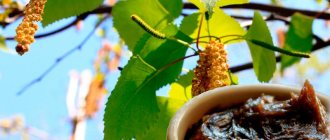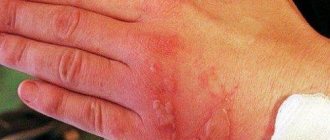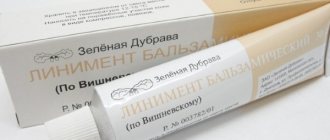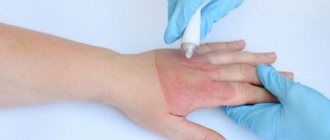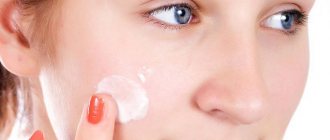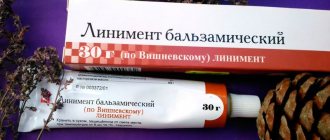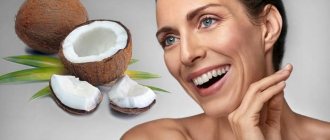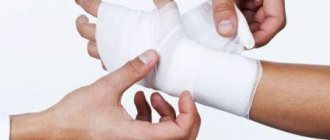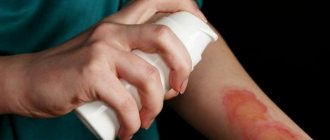Nowadays it is very easy to get burned. The danger of this awaits us at every step: boiling water from a kettle, household electrical appliances at home, chemical reagents at work, even simple recreation in nature can have unexpected and unpleasant consequences. Using Vishnevsky ointment for burns will quickly relieve symptoms and speed up wound healing.
Throughout life, every person encounters similar injuries several times, but not everyone knows what to do. In society, there is a whole list of methods of providing first aid to burn victims, which, at best, do not bring the expected effect, and may even lead to undesirable consequences. This may include applying a compress of various alcohol tinctures or treating the affected area with a variety of oils.
Modern medicine has a large number of medications that help with these pathologies. Some of them were originally intended for the treatment of burns of varying severity. But only a few of them can boast that they have been successfully used for more than nine decades. The use of Vishnevsky ointment for burns allows you to quickly eliminate all the unpleasant consequences of the injury.
What is a burn?
A burn is a violation of the integrity of the skin and mucous membranes due to exposure to elevated temperature, electric current or chemically aggressive components. At home, women are injured when preparing food or ironing clothes. Children are also often burned by boiling water.
Only 2nd degree burns can be treated at home. Vishnevsky ointment will be effective for skin redness and blisters. Regular treatment of wounds quickly brings results: within a few days you will notice a noticeable improvement in the condition of the skin. In other cases, it is advisable to consult a doctor.
Why is Vishnevsky’s liniment used to treat burns, and in what cases is it used?
Burn wounds, even small and relatively mild ones, are not as harmless as we think. When we get injured, we try to treat it at home, making a lot of mistakes.
For example, we open blisters, peel off scabs, and wash the wound with irritating alcohol solutions. After such self-medication, the wound often becomes inflamed and infected.
An infection that penetrates through a burn easily enters the bloodstream, which causes various complications, including soft tissue necrosis and gangrene.
The complications described above can be avoided if the burn is treated correctly from the beginning. Among all folk anti-burn remedies, the safest is Vishnevsky ointment.
It has no contraindications, it is prescribed for children, and it contains no harmful substances. Even if you manage to use it incorrectly (which is almost impossible), you will not make it worse for yourself.
Does balsamic liniment help get rid of burns? It helps, and quite quickly. Reviews about this product are always positive. Many claim that 1st and 2nd degree burns can be cured in 1 day with its help. Want to know how? Then read the instructions.
Use for burns
Vishnevsky ointment is used only for 1st and 2nd degree burns. Can the product be used for complex injuries? Do not do it. This will not bring the desired effect, and it can also cause harm. Vishnevsky ointment for burns should not be used in the following cases:
- Third degree burns. The resulting scab (crust) has a black or gray tint.
- Fourth degree burns. In this case, not only the top layer of skin is affected, but also tendons, muscles, and sometimes bones. Ointment won't help here.
The ointment should not be used for electrical and radiation burns. Considering all of the above, it can be argued that the product is effective only for thermal and chemical injuries of 1st and 2nd degrees.
pharmachologic effect
Birch tar is known for its antiseptic properties; it has a rather pungent odor, which dissipates when applied. In folk medicine, tar is well used in the presence of fungal diseases, psoriasis, mastitis, and gangrene. The component relieves pain, itching, swelling, regenerates tissues and increases their blood circulation.
Xeroform is a synthetic antiseptic, prevents the development of pathogens, and has astringent properties.
Castor oil heals wounds and is active against microbes, disinfects skin areas, regenerates tissue, and promotes the formation of new cells.
Some manufacturers replace the last ingredient with fish oil.
Efficiency
According to reviews, Vishnevsky ointment for burns has a positive effect, provided it is used as intended:
- The drug has an antiseptic effect, which is very important for such injuries.
- The product accelerates tissue recovery. They increase blood flow to the application site.
- The medication softens the skin.
The disadvantages include only a few points: a strong smell, as well as the fact that if it gets on clothes, the ointment is very difficult to wash off. It should be borne in mind that the remedy was not created to treat such injuries - its purpose is different. Thus, although Vishnevsky ointment helps with mild burns, it is still not considered the best choice.
A little about Vishnevsky's drug
Military doctor A.V. Vishnevsky invented balsamic liniment in 1927. To do this, he mixed birch tar, xeroform and castor oil. The resulting ointment had unique properties:
- xeroform produced an antiseptic effect;
- tar increased blood flow to tissues, which accelerated their regeneration;
- castor oil transported the remaining substances deep into the skin.
In modern times, the Vishnevsky Institute (Institute of Surgery) was created in honor of the inventor, on the basis of which the Vishnevsky Burn Center was opened. Based on this, one can imagine how many lives were saved by the miraculous ointment, which made the doctor so famous.
Is it possible to use Vishnevsky ointment for burn injuries? Not only is it possible, but it is also necessary. In this article you will find information about how to use the drug correctly and what can be cured with its help.
Compound
Vishnevsky ointment for skin burns is effective due to its components. It consists of:
- Castor oil. Thanks to it, a dried crust does not appear, which is important for burns. The product does not freeze in the cold and is perfectly absorbed.
- Birch tar. This component is found in many drugs. Thanks to it, the ointment has an antiseptic and blood supply effect.
- Xeroform. The component has an antibacterial effect and dries the injured area. Another substance ensures thickening of the drug to the required consistency.
- Aerosil.
- Colloidal silicon dioxide.
Vishnevsky ointment is also used for burns because it is available in almost every home. And with this kind of injury, it is important to provide assistance as soon as possible, and most often, improvised means and what can be found in the first aid kit from suitable drugs are used. Liniment is sold in glass jars of 25, 40, 100 g, as well as in tubes of 40 g. The appearance of the ointment is different. Usually it is a homogeneous mass from brown to light yellow.
The price of Vishnevsky ointment in pharmacies is low, it may vary depending on the volume of the container and the manufacturer. For example, a remedy (30 g) costs 23 rubles, and a remedy from the Borisov Plant (40 g) costs 48 rubles.
Features of the composition and corresponding properties of the ointment
The composition of the ointment is very simple: Castor oil, tar and xeroform. Each component performs its functions:
- Castor oil has wound healing properties. When applied to a wound, it creates a protective layer, thereby preventing contamination and infection of the wound. Castor oil is excellent for burns and frostbite, helping to renew the epidermis. To a lesser extent, this substance acts as an antiseptic.
- Tar is a natural antiseptic. It contains more than 100 active substances. Tar also increases blood circulation at the site of application of the ointment and thereby improves nutrition of damaged tissues.
- Xeroform is the only synthetic element in the composition. It is an antiseptic.
Indications
What can Vishnevsky ointment be used for? The drug is used to treat:
- psoriasis;
- bedsores;
- purulent wounds;
- frostbite;
- inflammation of the lymph nodes;
- thrombophlebitis;
- ulcers.
Using the product as intended allows you to get results fairly quickly. The ointment should be applied to clean skin.
Other Applications
The scope of use of the ointment is wide. The product is used in the following cases:
- Due to the warming effect, the drug treats lymphadenitis, lymphangitis, sinusitis, external otitis, mastitis, lactostasis, radiculitis.
- The ointment is used for bruises and skin damage.
- The product helps with insect bites, as it quickly dissolves the bite site and reduces itching. In this case, the ointment is applied to the wound.
- In the last century, the drug was used for psoriasis, dermatitis, and wet calluses.
- In surgery, this drug is often chosen for dressing purulent wounds, as it always provides a positive effect.
Types of burns
A person receives such injuries in domestic and work conditions. Burns can occur due to exposure to the sun, hot steam or electricity. Vishnevsky ointment is used only after the nature of the lesion has been determined:
- Hot water burns of 1st and 2nd degree are treated with ointment. Treatment for grade 2 trauma is performed only after spontaneous opening of the blister. You should not pierce the blisters without authorization, as there is a risk of infection. It is advisable to apply Vishnevsky ointment under the bandage. It is fixed with an adhesive plaster and is not removed for 2-3 days.
- Sunburns are usually 1st and 2nd degree. To prevent the unwanted effects of exposure to the sun, ointment is also used. The condition improves 2 days after the start of treatment. If there is no effect, they look for another treatment method.
- Electric shock is dangerous to people. Rupture of internal organs cannot be ruled out. Signs of damage may vary. Treatment of such lesions is best done under the supervision of a physician. It is not advisable to use any methods yourself.
Contraindications
The main advantage of the drug is its safety. It is used to treat pregnant women, children, and sensitive individuals. The product should not be used only if you are individually intolerant to the drug. Performing an allergy test is simple: apply a thin layer of ointment on the bend of the elbow for a day. An allergy is indicated by the appearance of:
- redness;
- itching;
- rash;
- hives.
You should not use the drug if it causes discomfort. After all, now there are many other means that can quickly cure burns.
Instructions
Before using Vishnevsky ointment for burns with boiling water, it is necessary to provide first aid, which consists of the following:
- If the injury is thermal, wash the wound with cold water, apply a clean bandage and apply ice.
- In case of a chemical injury, remove clothing and wet the affected area with water. Then buffer solutions unique to different types of chemicals are used:
- The acid is neutralized with a 2% solution of baking soda (1 tsp per 2.5 cups of water).
- Alkalis - citric acid (1 tsp) and clean water (0.5 l).
- Lime - 2% sugar solution.
- Carboxylic acid - glycerin.
After this, medications can be used. For a chemical burn, Vishnevsky ointment is applied to the affected area in a thick layer. A little of the product is absorbed into the material used. Then you need to apply a sterile bandage - cotton cloth or bandage. Then it is fixed with adhesive tape. The bandage should not move and cause discomfort.
To ensure a therapeutic effect, the ointment is applied to the injured area for at least 6 hours. It is best to use it at night. Change the bandage at least once a day. You need to take clean bandages and dressings. Remaining ointment must be removed.
It is necessary to use the product to treat burns in rare cases. You should not choose this ointment for injuries to the face, eyes, or sensitive tissues. If you are not sure of the effect, you should consult a doctor who will prescribe the necessary drugs and tell you about the rules for their use.
How is the ointment used?
Vishnevsky ointment for burns is recommended to be used under a bandage:
- The affected area is thoroughly washed to remove contamination.
- For a second degree burn, the product can be applied after opening a blister filled with liquid.
- A bandage with ointment is applied to the wound surface.
A bandage or medical plaster is used to secure the bandage.
Attention! It is worth remembering that it is worth applying the product in sufficient quantity - some of it will be absorbed into the fabric.
The ointment should be applied under the bandage.
We should not forget about the need for regular dressing changes. They can be carried out 1-2 times a day. After removing the bandage, the used portion of liniment is removed, and the procedure for applying the product is repeated according to a certain algorithm. The instructions must not be violated.
What not to do?
Many folk remedies for burns are not only ineffective, but also dangerous, as they can worsen the condition. In case of such damage, you should not do the following:
- lubricate wounds with vegetable oil;
- puncture blisters;
- lubricate wounds with alcohol, iodine, brilliant green or urine;
- clean the affected areas from remnants of clothing;
- cover the wounds with a plaster, apply a tight bandage;
- wash burns with tea leaves.
Any medications should be used only after consultation with a specialist. Self-medication can lead to negative consequences.
What to replace
Vishnevsky ointment and ichthyol ointment differ in composition. But the products work great for problems with burns, wounds, and erysipelas. Balsamic liniment has a wider range of applications. But that's where the similarities end.
Frostbite, colds, skin diseases that are treated with liniment. The product is effective in gynecology. Ichthyol ointment helps in the treatment of pathologies caused by staphylococcus, streptococcus, and Candida fungi. The downside of this paste is a large list of contraindications.
Another frequently used remedy is Levomekol, which also treats purulent wounds, pimples, boils, and ulcers. But the latter remedy cannot be used during pregnancy. Vishnevsky ointment is valued for the presence of natural components in its composition. Balsamic liniment is very easy to apply and is non-toxic. Levomekol's main substance is an antibiotic, which is not suitable for some.
Thus, Vishnevsky ointment is effective in treating only mild burns. You just need to use it correctly, and then the result of therapy will be excellent.
Analogues of Vishnevsky ointment
Over the course of a hundred years after the invention of Vishnevsky's ointment, many formulations were developed and released - more effective, without a pungent odor, providing oxygen access to the wound. What formulations does the modern pharmacy industry offer as an alternative to the old remedy (Dr. Vishnevsky’s liniment)?
- Ichthyol ointment. The main active ingredient (ichthyol) is active against staphylococci, streptococci, and yeast-like fungi. Has anti-inflammatory and analgesic effects. In addition to treating boils, it is used for eczema, streptoderma, burns and erysipelas. The main effect of ichthyol is that it draws out pus, but does not enhance wound healing.
- Levomekol is an antibiotic ointment. Provides a pronounced effect in the treatment of purulent wounds. Significantly more effective than Vishnevsky's liniment.
